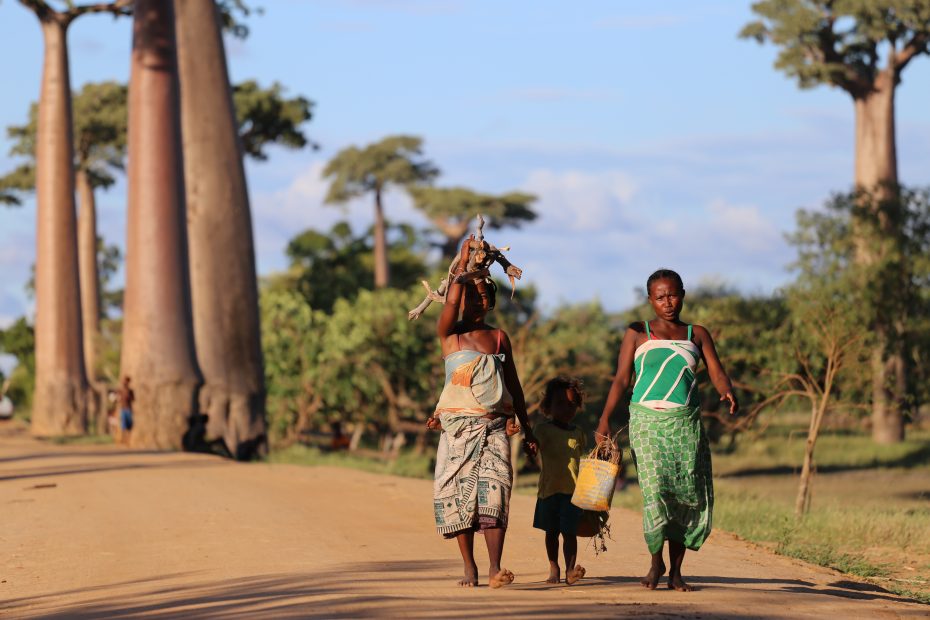Table of Contents
Introduction
Madagascar is a place of magic and wonder. Located off the southeastern coast of Africa in the Indian Ocean, this island nation is home to some of the most diverse and spectacular landscapes in the world. From lush tropical rainforests to rugged mountains, spectacular beaches and vast savannas, Madagascar’s landscapes are as whimsical as they are beautiful. In this island paradise, you’ll discover a fascinating array of rare and exotic flora and fauna, immerse yourself in fascinating local culture and traditions, and be awed by dramatic formations and vistas around every corner. Let’s explore some of the highlights of Madagascar’s whimsical landscapes.
The Lush Tropical Rainforests
Blanketing much of eastern Madagascar, the island’s tropical rainforests are simply stunning. Lush, dense and vibrant, these forests are home to an astounding array of plant and animal life. Towering canopy trees draped in vines and giant ferns cover the forest floor. Orchids, pitcher plants and rare palms flourish in this botanist’s paradise. Listen for the calls of lemurs and keep an eye out for chameleons, geckos and colorful frogs. The humidity embraces you like a warm, wet blanket as you wander along forest trails to scenic waterfalls and idyllic streams. Madagascar’s rainforests offer an incredibly immersive rainforest experience.
The Rugged Mountains
The interior highlands of Madagascar are defined by rugged, rolling mountains and misty high-altitude plateaus. The Tsaratanana Massif in the north boasts impressive granite peaks reaching nearly 9,000 feet. Further south lies the Ankaratra Massif with scenic trails through pine forests and volcanic lakes. The Andringitra National Park offers spectacular granite peaks, plunging canyons and multi-day trekking routes. With its rock formations, valleys, and vistas, Madagascar’s mountains are a trekker’s paradise. Rise early to catch magical sunrises lighting up the mountains in soft dawn hues.
The Spectacular Beaches
Fringed with swaying palms, Madagascar’s beaches look like they are straight off a postcard. With over 4,800 km of coastline, you are spoilt for choice when it comes to beach-hopping. Nosy Be in the northwest has jewel-toned waters and brilliant white sand beaches studded with giant boulders. Île Sainte Marie in the east boasts palm-lined shores surrounded by thriving coral reefs. In the southwest, Ifaty’s blindingly white beaches and magical sunsets make it a laidback travelers’ hotspot. Relax under thatch-roofed cabanas, snorkel with sea turtles, or just soak up the sun and serenity on Madagascar’s spectacular beaches.
The Vast Open Savannas
The western and southern regions of Madagascar open up into vast grassy savannas studded with unique flora and fauna. Here you’ll find wide open skies, endless golden grasses swaying in the wind and iconic Baobab trees silhouetted on the horizon. Keep your eyes peeled for ring-tailed lemurs, radiated tortoises and Verreaux’s sifakas. Rural zebu cattle herders in straw hats bring an element of timeless charm. With their vivid sunsets and starry night skies, Madagascar’s savannas feel like the edge of the world.
The Striking Sandstone Formations
One of Madagascar’s most visually arresting landscapes is its surreal sandstone formations. Isalo National Park protects eroded sandstone outcrops weathered into strange shapes and textures. Admire natural sculptures like the Piscine Naturelle, a smooth bowl-shaped depression filled with crystalline blue water. Further north, the orange sandstone cliffs, arches and hoodoos of Ankarana National Park resemble a moonscape. Pretend you’re on another planet as you encounter razor-thin ridges, natural bridges and bat-filled caverns. These sandstone landscapes are both beautiful and bizarre.
The Quaint Rural Villages
Dotted among its landscapes are Madagascar’s rural villages offering glimpses of traditional island life and culture. Wooden zebu carts rattle down red dirt roads, passing thatch and daub huts. Smiling villagers in colorful lambas (wraps) mine salt from the shores or husk rice by hand. Sacred hilltop burial sites contain generations of ancestors. Spending time in places like Andasibe, Ambalavao or Fianarantsoa allows you to experience authentic daily Malagasy life amidst the spectacular landscapes.
Conclusion
From steamy rainforests to epic mountains, pristine beaches and wide open savannas, Madagascar’s landscapes are as diverse as they are beautiful. Nature’s art is on display in the bizarre sandstone formations. Rural villages connect you with time-honored traditions still thriving amidst this island’s magical landscapes. With wildlife encounters, hiking, culture and scenery there’s something for everyone. If you seek adventure, beauty and wonder, then set your sights on Madagascar, the enchanted world of the Indian Ocean.
FAQs
Where is Madagascar located?
Madagascar is an island nation located off the southeastern coast of Africa in the Indian Ocean, about 400 km east of Mozambique.
What is the best time to visit Madagascar?
The best time to visit is during the dry season between April-November. The weather is sunny with minimal rain during these months. Avoid the hot rainy season from December-March.
What languages are spoken in Madagascar?
The official languages are Malagasy and French. Many locals also speak English. Malagasy is spoken throughout the country.
What are some unique animals found in Madagascar?
Lemurs, chameleons, radiated tortoises, aye aye, fossa, globe-horned chameleon, giraffe weevil, satanic leaf-tailed gecko.
What are the top things to see and do in Madagascar?
Trekking in Andringitra National Park, beach-hopping in Nosy Be, seeing Baobabs in Morondava, lemur spotting in Ranomafana, snorkeling at Ifaty, exploring Ile Sainte Marie, and visiting sandstone landscapes like Isalo National Park and Ankarana Reserve.
